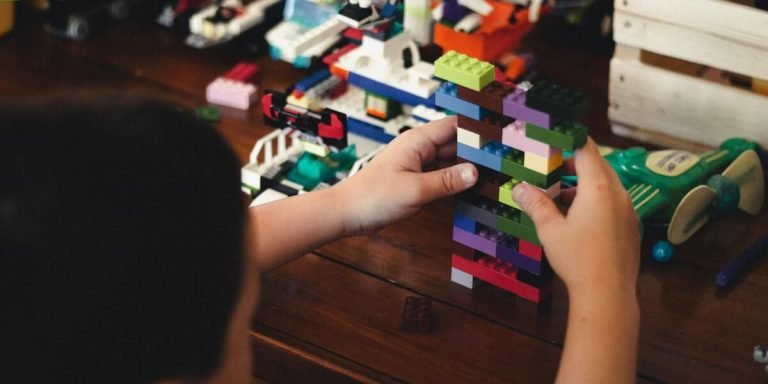Specific Learning Disorder: Understanding the Impact on Childhood Education
Specific Learning Disorder is a prevalent issue that often goes unnoticed, affecting many children during their crucial years of education. This disorder refers to a group of neurodevelopmental disorders characterized by difficulties in learning basic academic skills such as reading, writing and arithmetic – skills fundamentally essential for successful educational outcomes.
This blog will shed light on the concept of “specific learning disorder,” giving an insight into how it impacts childhood education. It’s paramount that both parents and educators understand this condition because early identification can transform the trajectory for kids combating this typical developmental hurdle. We’ll discuss special education resources and support mechanisms you should be aware of which are vital when dealing with affected students.
Did you know?
A little known fact is that Specific Learning Disorder (SLD) affects approximately 5-15% of school-aged children worldwide, significantly impacting their educational performance. Despite this prevalence, many cases go undiagnosed due to lack of awareness and resources in schools.
Understanding Specific Learning Disorders: Definitions and Impacts
Specific Learning Disorders (SLD) are an umbrella term for a variety of challenges that affect the way children apprehend and process information. These disorders can make standard educational methods less effective, causing certain learners to seemingly fall behind their peers. As per data from the National Center for Education Statistics, approximately 5% of schooled youngsters in America have an identified specific learning disorder.
In today’s digital age, educators now supplement traditional teaching techniques with advanced technology-based resources aimed at addressing SLDs effectively. This integration has been revolutionizing how these students partake the learning journey; it fosters inclusivity by tailoring education to meet individual needs rather than expecting them merely fit into conventional structures.
Understanding Specific Learning Disorders is paramount not just for parents but also teachers considering they significantly impact a child’s academic achievement and emotional wellbeing. They include conditions like dyslexia impacting reading skills or dyscalculia affecting mathematical reasoning capabilities. By identifying these barriers early on through comprehensive assessments, we equip ourselves better towards providing practical support strategies optimizing our young learner’s abilities and strengths while compensating areas where they may be lacking.
Therefore adopting modern technological tools within those remediation strategies becomes more relevant than ever before as this approach humanizes education making it truly inclusive especially in contemporary society which so highly values technical literacy.
Recognizing the Characteristics of Specific Learning Disorders
Recognizing the characteristics of specific learning disorders involves identifying distinctive signs that point to different types of these challenges. In this digital era, technology integration in education has become a crucial tool for educators and parents alike.
A child with dyslexia, one type of specific learning disorder, may struggle with reading words in sequence or understanding what they read. Technology can simplify complex processes by breaking them down into manageable parts through interactive games and applications tailored specifically for children with dyslexia.
In contrast, a child dealing with Dyscalculia – another form of specific learning disorder – might particularly find math problems daunting. Educational software offers visual teaching methods such as animated number lines or fraction bars which can better explain concepts that are otherwise abstract when taught traditionally on paper.
Often times overlooked but equally important is Attention Deficit/Hyperactivity Disorder (ADHD). This condition makes it hard for kids to concentrate and control impulses. Incorporating tech tools like noise-cancelling headphones or focus-centric apps could have positive impact on their academic journey without making them feel singled out from their peers.
Surprisingly enough, even writing can be an uphill task due to Dysgraphia – yet another variant under the umbrella term ‘Specific Learning Disorders’. Fortunately today’s technological advancements provide features ranging from predictive text inputs to voice-to-text converters aiding students overcome handwriting burdens while ensuring effective communication skills development simultaneously.
The Psychological and Social Effects on Affected Students
It’s not only academics that are impacted when a child has a specific learning disorder. The psychological and social effects can be equally profound, requiring thoughtful approaches from parents and educators alike.
Psychologically, children grappling with specific learning disorders often struggle with feelings of inadequacy or low self-esteem. They may question their intellectual capabilities when comparing themselves to peers who do not face similar challenges in assimilating information or acquiring new skills. This comparison can lead to frustration and anxiety about schoolwork, causing them to withdraw from academic initiatives they perceive as beyond their grasp.
In terms of the social impact, these students frequently experience isolation due to struggles in participating fully in classroom activities or discussions which others find straightforward. Their inability to keep pace might result in bullying incidents – heightening feelings of exclusion further.
Tech integration offers an effective solution via special education resources and support systems tailored for particular needs posed by different types of learning disabilities. In 2023 there is greater awareness around using technology tools such as specialized apps designed specifically for dyslexia or ADHD sufferers amongst others.
These tech resources foster independence among affected students – instead of relying on constant external help which sometimes hinders developing self-reliance they’re enabled towards autonomy at their own individualized paces while bolstering confidence levels too.
Essential Resources for Managing Specific Learning Disorders in Education
Understanding and managing specific learning disorders has never been as crucial in the field of education as it is now. With growing awareness about these disorders, educators adopting a more inclusive approach to teaching have begun integrating technology into their curriculum – thus reshaping how children with special needs are taught.
Gone are the days when special learning disorder was seen as an insurmountable hurdle in academic progress. Thanks to the advancement of technology integration being embraced by schools and institutions today, we’ve taken leaps towards minimizing such barriers for students. Educational apps tailored specifically for those diagnosed with dyslexia or ADHD offer exercises that enhance concentration and help improve reading skills – keeping them engaged while making learning fun.
The support does not just end at educational apps either; adaptive technologies like text-to-speech software aid in bridging communication gaps faced by non-verbal individuals or ones who struggle with writing assignments due to dysgraphia—a condition that affects fine motor skills coordination needed for handwriting.
Furthermore, advancements within Assistive Technology (AT) serve children on all ends of the spectrum—from mild attention deficit issues right up to significant cognitive impairment—by providing tools designed meticulously around each child’s particular necessities. It’s no surprise then even parents have welcomed tech-integration wholeheartedly knowing well its potential can make a world difference concerning their child’s education journey during challenging times marked by specific learning disorders.
Supportive Tools for Teachers and Educators
In the evolving landscape of education, teachers and educators require supportive tools to manage specific learning disorders effectively. When integrated with appropriate technology in 2023, these resources prove instrumental in accelerating a child’s overall development.
Firstly, educational apps act as constant companions for children struggling with specific learning disorders. These applications function on experiential methodologies offering innovative teaching strategies that engage students differently from conventional means. The basis is to break down complex concepts into easy-to-understand modules making it easier for them to comprehend and remember information.
Secondly, software programs designed specifically for special education needs are becoming increasingly prevalent today within school ecosystems. Such utilities offer customizability allowing teachers to modify content based on individual student needs thus enabling personalized assistance towards diverse academic requirements.
Thirdly, virtual reality (VR) sets up an environment where students can learn at their own pace without fear or social embarrassment associated with traditional classroom settings. VR offers immersive experiences which greatly aids those kids having difficulty focusing or understanding instruction through regular modes of teaching due its interactive nature appealing more prominently towards visual learners over auditory ones.
Empowering Parents with Knowledge and Strategies
Understanding a specific learning disorder and how it impacts your child’s education can be challenging for parents. But, fear not! As we venture further into 2023, numerous resources are available to empower you with the knowledge and strategies needed to help manage such situations effectively.
Firstly, awareness is power. Understanding what a specific learning disorder means—its symptoms, effects on learning capabilities—is key in navigating through this journey successfully. The National Center for Learning Disabilities offers comprehensive information that caters specifically to educating parents about these disorders.
Next comes strategy development which involves creating productive studying methods catered towards children with special educational needs. Websites like Understood.org offer practical everyday tips assisting both educators and parents in simplifying difficult concepts making them more digestible for young learners experiencing difficulties due to their condition.
In addition, technology serves as an important ally when integrated effectively within the field of education particularly aiding those who have specific learning disorders.
Online communities also play vital roles offering platforms where individuals share experiences provide mutual support even advice on specialised matters related parenting a child diagnosed with such conditions(LD online forums).
Navigating Support Systems for Students with Specific Learning Disabilities
In the era of digitalization, integrating technology into the educational sector has emerged as a crucial tool in aiding students with Specific Learning Disorders (SLD). The widespread adoption of technology integration provides customizable platforms for learners to explore their strengths and work around cognitive barriers. Special Education Resources and Support systems utilize this revolutionary aspect by incorporating smart classrooms, adaptive software applications, assistive technologies among other technological advancements tailored explicitly for these unique learners.
Navigating through support systems designed specifically for students with SLD can initially feel daunting. However, once parents or educators comprehend the true power digitized learning tools hold; they discover an untapped potential that transforms conventional teaching methodologies into innovative ventures. These specialized resources ensure every child gains quality education irrespective of any inherent learning disorders.
The journey towards exploiting technologic assistance calls upon understanding the specific needs associated with each disorder and then aligning them precisely to help improve focus areas such as reading skills or mathematical abilities etcetera. Remember – there’s no one-size-fits-all when it comes to children’s education since what works wonders today might not provide similar results tomorrow due to continuous evolution in both – learner behavior patterns & technology trends! Henceforth embrace tech-integration wholeheartedly but mindfully!
Collaborative Approaches in School Settings
In a dynamic and inclusive educational landscape, the importance of collaborative approaches in school settings for students with specific learning disorders cannot be overstated. Enhancing partnerships between all parties involved including teachers, parents or caregivers, therapists and technology experts provides opportunities to create an individualized learning experience. This approach aligns perfectly with the current emphasis on “Special Education Resources and Support” that schools around our nation are striving towards.
The core premise of collaboration is pooling resources together as well as sharing responsibilities within schooI districts to support students diagnosed with specific learning disorder. Many education providers have implemented this model successfully and witnessed significant improvements in learner outcomes since 2023.
One key aspect involves creating classrooms equipped not only with assistive technologies but also ensuring educators proficiently handle these devices effectively – maximizing their potential benefits for children who need them most. Solutions like interactive whiteboards can improve engagement while speech-to-text software may help those struggling particularly hard due to their condition.
Additionally, a true integration scenario would involve constant interaction between specialist staff such as occupational or speech-language therapists working along side mainstream teachers – enhancing transfer of skills from therapy sessions into regular classroom environment more seamlessly than ever before possible!
Apart from academic personnel involvement there’s another critical element: parental participation! Encouraging parents become active members in decision making processes pertaining child’s education could result proactive measures taken home which extend beyond boundaries traditional schooling system alone thus fostering growth development far-reaching impacts every facet his her life altogether!
Accessing Community Assistance and Advocacy Programs
In our contemporary society, there’s a breadth of community assistance and advocacy programs available to aid the journey for students with a specific learning disorder. These initiatives play an integral role in promoting inclusivity and ensuring equal access to quality education for all children.
First off, let’s address local non-profit organizations that run various programs specifically designed around assisting children battling specific learning disorders. These organizations offer resources ranging from educational materials, tutoring services, psychological counseling as well as parent support groups. They are instrumental when it comes to providing knowledge about ‘Special Education Resources and Support’ on both regional and national levels.
Conclusion
In essence, understanding the dynamics of a specific learning disorder is an integral part of ensuring each child receives effective and consistent education. We need to embrace inclusivity in our classrooms while comprehending that every learner’s journey differs due to these unique challenges they face. As we demystify specific learning disorders, we unlock infinite potential for children facing this struggle.
Don’t let your quest end here—our website holds a wealth of information on similar topics that deal with numerous aspects relevant to educating young minds. Stay connected to gain insights into guidance strategies and support structures available not just for educators but also parents who are pivotal in their child’s educational journey; because together, as partners in growth, we can surmount any challenge posed by a specific learning disorder.







